Caesalpinia gilliesii, Bird-of-Paradise Shrub
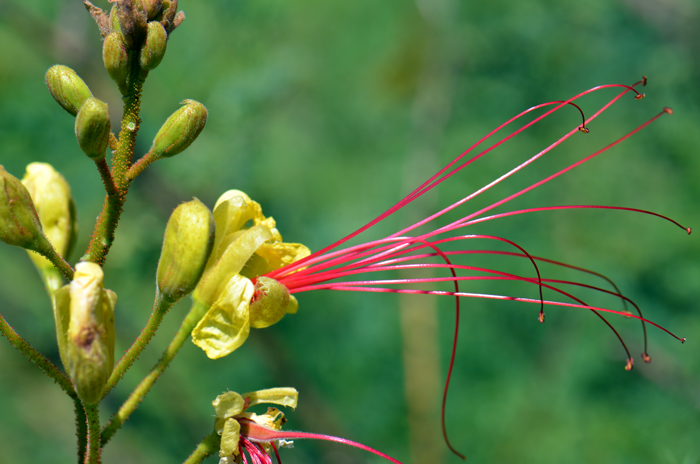
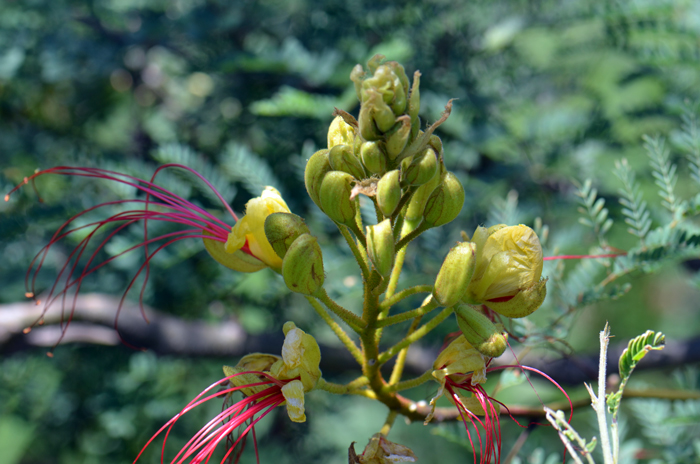


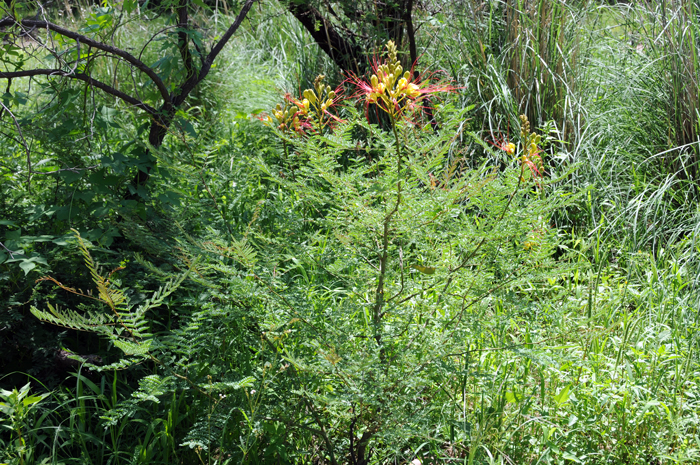
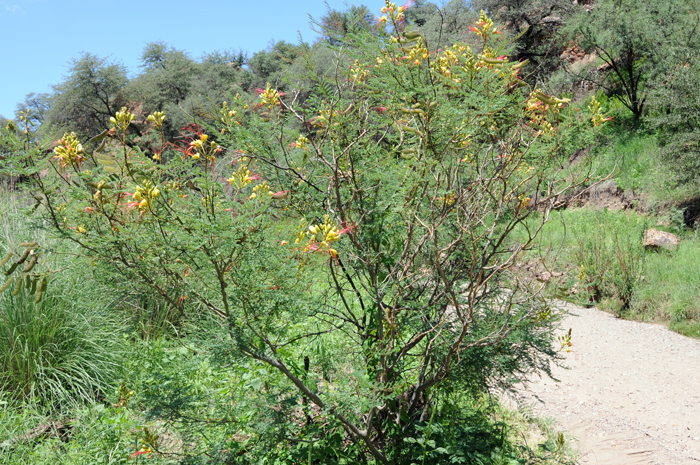
Scientific Name: Caesalpinia gilliesii
Common Name: Bird-of-Paradise Shrub
Also Called: Bird of Paradise, Bird of Paradise Bush, Desert Bird of Paradise, Mexican Bird of Paradise, Paradise Caesalpinia, Paradise Poinciana, Yellow Bird of Paradise; (Spanish Amarillo, Barba de Chivo, Mal de Ojo, Tabachín).
Family: Fabaceae or Leguminosae Family
Synonyms: (Caesalpinia macrantha, Erythrostemon gilliesii, Poinciana gilliesii)
Status: Introduced from South America and now Naturalized - escapee from cultivation; species is Native to Argentina and Uruguay.
Duration: Perennial
Size: 3 to 12 feet tall (1 to 4 m) Erythrostemon gilliesii grows to 1–4 m tall, depending on rainfall. The leaves are bipinnate, 10–15 cm long, bearing 3-10 pairs of pinnae, each with 6-10 pairs of leaflets 5–6 mm long and 2–4 mm broad. The flowers are borne in racemes up to 20 cm long, each flower with five yellow petals with 10 long conspicuous red stamens. The pods are densely covered in short, red glandular hairs.
Growth Form: Tree or large shrubs; evergreen, semi-deciduous; plants with a foul aroma, stems glandular hairy.
Leaves: Green; evergreen; glabrous, compound, bipinnate.
Flower Color: Yellow, orange and red flowers; 5 yellow petals with 10 pair of showy red stamens, flowers in racemes up to 8 inches long (20 cm); fruit toxic, dehiscent, oblong and flat, pods curved to straight and twisted at maturity, seed pods gland-dotted with dense short red glandular hair.
Flowering Season: April or May to August and September
Elevation: Below 3,000 feet (914.4 m)
Habitat Preferences: Disturbed areas, roadside, gravelly areas.
Recorded Range: Bird-of-Paradise is found mainly in the southwestern United States in AZ, CA, GA, NM, NV, OK, TX and UT. Greatest populations are found in Arizona, New Mexico, Utah and Texas.
North America & US County Distribution Map for Caesalpinia gilliesii.
North America species range map for Bird-of-Paradise Shrub, Caesalpinia gilliesii:
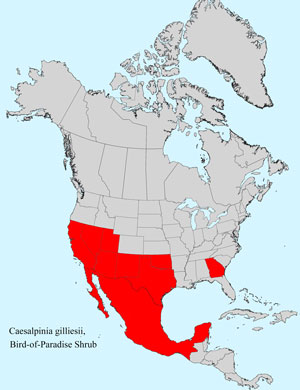
U.S. Weed Information: Unknown
Invasive/Noxious Weed Information: Unknown
Wetland Indicator: Unknown
Threatened/Endangered Information: Unknown
In the Southwestern United States Arizona has 7, California has 6, New Mexico has 5, Nevada has 2, Texas has 14and Utah has 3 species of Caesalpinia species of Caesalpinia. All data approximate and subject to revision.
Comments: Bird-of-Paradise Shrub has beautiful and showy flowers and is widely available as a cultivated ornamental plant in arid temperate regions including the United States, and in the tropics. Occasionally plants escape and become naturalized through the western, central and southern parts of the state. Plants are originally native to South America, mainly in Argentina and Uruguay. The plants are naturalized in southern Arizona and Texas. There also occur and are common in the rest of the southwestern United States.Caesalpinia gilliesii is not a relative of the tropical Bird of Paradise in the genus Strelitzia.
In Southwest Desert Flora also see Red Bird-of-Paradise, Caesalpinia pulcherrima.
The species epithet “gilliesii” is named for John Gillies (1792-1834), Scottish naval surgeon and early 19th century botanist in Chile and Argentina.

